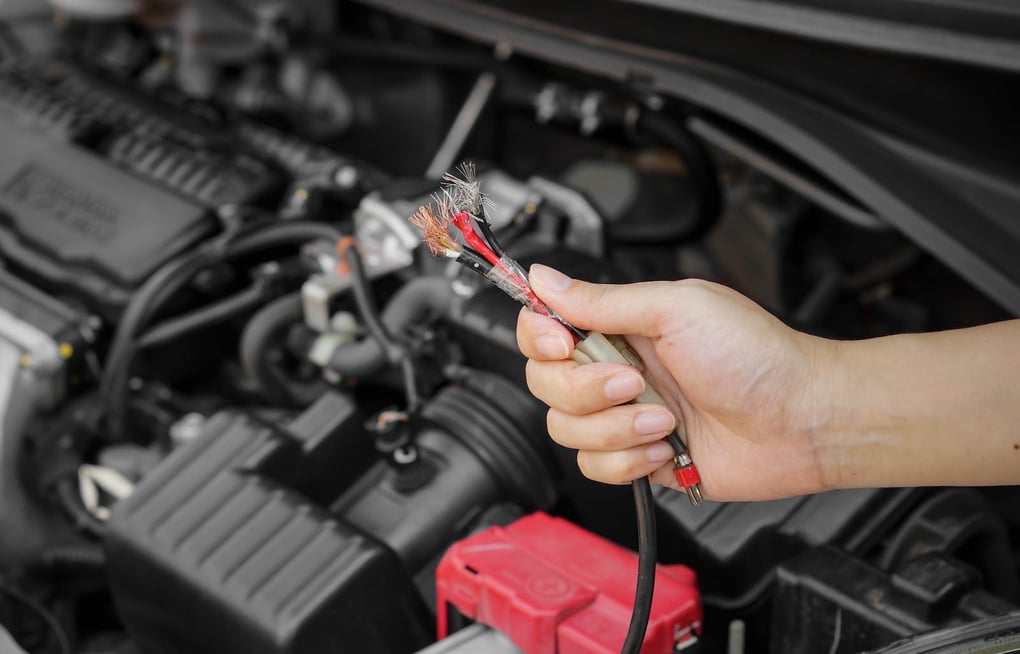While your car sits idle, the inside of your hood makes for a cozy escape from the cold for many unwanted creatures – like mice. They may be small, but they can create big problems for you and your vehicle. A single mouse can cause thousands of dollars in damage to your car in a matter of days. And the diseases they carry can be harmful to your health, too.
If you suspect a mouse has made your car its new home, the best course of action is to get it out, fast.
5 Ways To Tell If Mice Are In Your Vehicle
Erie Insurance provides five ways to tell if there are mice in your vehicle:
1. Car problems:
Unfortunately, some drivers first discover a rodent problem when their car won't start or isn't working properly. This is often caused by mice chewing through wires in the engine compartment. With so many complex electrical systems in modern cars, chewed-up wires are almost guaranteed to cause problems.
2. Damaged upholstery:
If a mouse has decided to make itself a new home in your car, it will start by looking for materials to build a nest. If you find holes in your seats, missing chunks of insulation or chewed-up foam, you might have a mouse problem.
3. Mouse droppings:
Like any pest infestation, finding animal waste is a pretty good indicator that you have a problem. Look for tiny mouse droppings on your car's carpeting, seat and dashboard.
4. Bad smells:
If you detect foul odors coming from your car, it may be due to a pest problem. Often, drivers will first detect these smells coming from the vehicle's air vents. Mice can use the vent system as a tunnel to get from the engine bay to your car's interior. And vents often provide easy access to insulation and filter materials they can use to build a nest.
5. Mouse nest:
Finding a mouse nest is the easiest way to confirm your rodent suspicions. The first place you should look is inside your car's airbox (that's where the engine air filter is located). Mice love this location because it's warm and protected from the elements. Open the box and look for signs of rodent freeloaders. The area should be empty and relatively clean, so it will be evident if there's a nest inside. You should also check under your car's plastic engine cover if it has one.
What To Do
Even if you leave your doors closed and your windows rolled up, there are plenty of ways for a mouse to get into your car. Once you've made the unfortunate discovery, here are four ways to get them out.
Turn up the heat.
Just like humans, mice don't like extreme temperatures. Roll up your car's windows and park in the sun on a nice day. Or blast the heat in the car for a few minutes. All that heat may convince the mouse to move out.
Honk the horn.
Loud noises, like honking your horn, may scare a mouse of its new home in your car.
Use repellent.
Most home improvement stores will sell several types of mouse repellents you can place in and around your car. Many people have also had success using cotton balls soaked in peppermint oil. A listener swears that spraying deer urine around the engine compartment will an excellent deterrent. Deer urine can be bought at Wal-Mart.
Set mousetraps.
Mousetraps aren't only useful for keeping mice out of your house. Setting traps in or under your vehicle can also help protect your vehicle from unwanted visitors.
Check with your insurance agent to be sure, but animal-related damage to your car is covered by the optional comprehensive coverage in your auto insurance policy. That includes damage to your car from mice or rats. You'll just be responsible for paying your deductible.
Photo Credit: wk1003mike/Shutterstock.com.

.jpg?width=150&name=jerry-headshot.jpg%20(1).jpg)